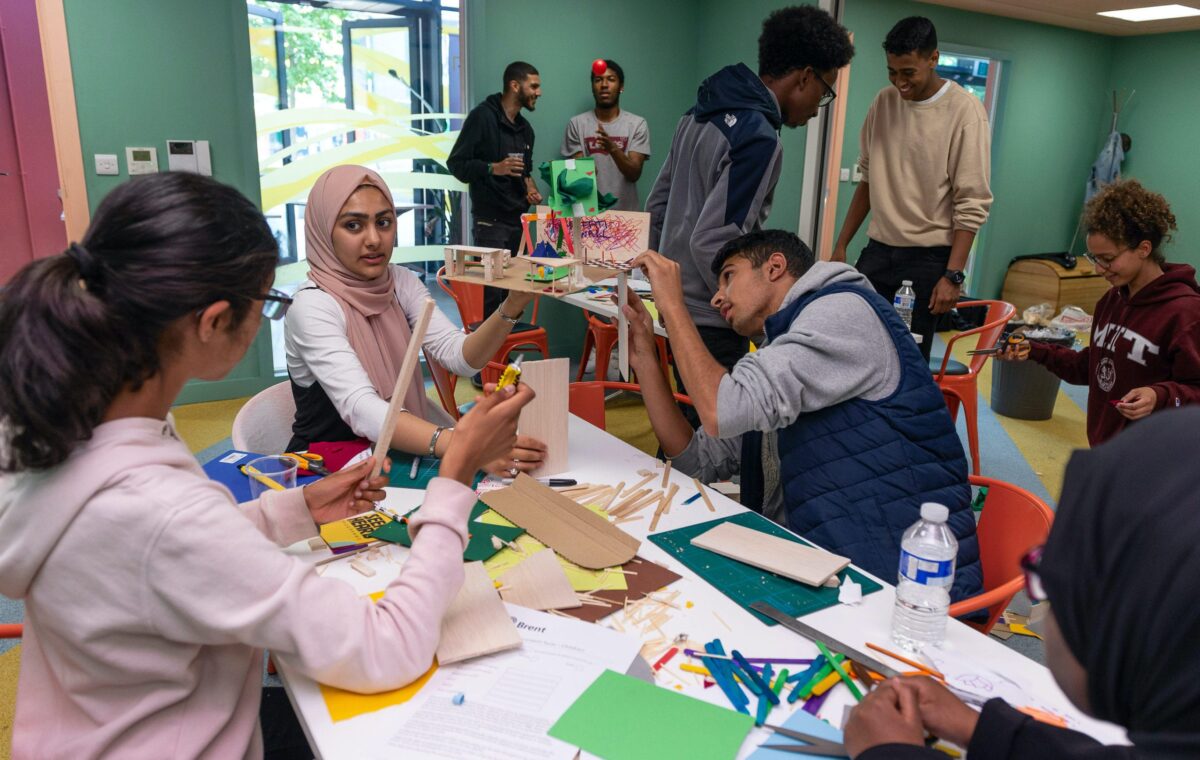In Brent, London’s Borough of Culture 2020, young people kick off a campaign calling for more inclusive public spaces

Words by Francesca Perry
Young people in the north London borough of Brent have launched the first phase of a public campaign calling for major changes in the way that public spaces are planned and designed – in order to be more inclusive of their needs. It follows a research and engagement project titled ‘Seen and Heard’, which was commissioned by Brent 2020, London Borough of Culture, and focused on the rapidly transforming neighbourhood of Wembley Park.
With the pressures of private development and disappearing space in London, creating and maintaining public space that is safe, creative, programmable and welcoming to young people is a growing challenge. The Blueprint Collective – a part-pressure group, part think-tank that comprises over 100 people aged between 15 and 24– says that it’s critical to take young people’s particular needs into account.
Through workshops and activities in collaboration with Brent Youth Parliament and urban design researchers at the London School of Economics (LSE), the Blueprint Collective developed the ‘Blueprint Charter’ – a manifesto calling for the needs of young people to be at the heart of the design of public spaces in Wembley Park, Brent and beyond.

‘There’s nowhere to just sit down and chill out, other than the library,’ says Tyrique, aged 19. ‘You normally see just stuff for children and elder people – you never see places for people our age. Knife crime is happening in our age group. And that’s due to having no space to chill out – there are no youth clubs anymore.’ Maahira, also aged 19, says: ‘We’re either too young to be there, or too old to be there – we need a space for us where we won’t get kicked off.’
In addition to the charter, which has now been published, the collective has drawn up a set of policy recommendations aimed at the public and private sector, detailing how the needs of young people should be considered.
‘Preconceived ideas of what we want in public spaces (way too often in the shape of skate parks) fail to acknowledge our actual needs and desires,’ one recommendation reads. ‘If agents of change (developers, councils) want their spaces to be used by us, the starting point is to meaningfully include us at an early stage in the design and programming of these spaces.’

A prototype design for youth-friendly public space will also be created in Wembley Park, based on the collective’s ideas, to act as a research tool for subsequent design thinking.
‘Young people’s views should be valued and should be protected and enhanced through policy, advocacy and investment,’ says Lois Stonock, director of Brent 2020, London Borough of Culture. ‘We believe this is a vital initiative that could have long-lasting positive consequences for the city.’
‘The planning process in London leaves out the generation of urban residents who most need public space to connect and participate in society,’ says Professor Ricky Burdett, director of LSE Cities. ‘The ideas and recommendations generated by the Blueprint Collective make it clear they want to be “seen and heard”. They bring fresh thinking that is helping transform real places in Wembley Park and influence the way planners and policymakers make space for people in the city.’
















